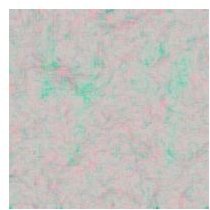Could Gene Therapy Be Used as a Color Blindness Treatment? Gene Therapy Could Treat the Causes of Color Blindness
Causes of Color Blindness
Color blindness can occur as the result of trauma and damage to the eye, brain,or nerve cells of the central nervous system. But by far the most common cause of color blindness is genetic, with a number of genes being implicated including: CNGA3, CNGB3, GNAT2, OPN1LW, OPN1MW, and OPN1SW. The mutations affect cells that function to detect various colors of the spectrum. The most common form of inherited color blindness affects an individual’s ability to distinguish between red and green and it’s caused by a faulty gene on an X-chromosome.
Although there is not yet a gene therapy treatment to cure color blindness, promising results have come from work on two color blind squirrel monkeys.
Gene Therapy for Color Blindness
These monkeys were unable to make a distinction between red and green, a condition that affects mostly males because the genes for red and green receptors are located on the X-chromosome. Females have two X-chromosomes so if they have a bad gene its damaging effects can be neutralized by a good gene on the other X-chromosome. Not so for males. However, scientists from the University of Washington used a gene therapy based treatment to cure these squirrel monkeys of their congenital color blindness condition and restored full color vision to the animals.
What is particularly spectacular about this research is that it has smashed a once preconceived notion about the plasticity of brains. Previously it had been thought that it was not possible to manipulate an adult brain in this way, and that a gene-based therapy would only work if intervention came at an early stage of development when the brain is more malleable - “plastic”. But this research has demonstrated that no other brain “re-wiring” was needed; the introduction of the gene was sufficient to restore full color vision.
The University of Washington researchers were able to introduce therapeutic genes into the light-sensing cells at the back of the eye by incorporating them into a virus that had its virulence factors silenced. Then they injected the viral load into an area just behind the monkey retina. The gene was the human form of the red-detecting opsin gene. The virus offloaded the genes which were taken up by monkey cells. The result was that the light-sensing cells were able to distinguish between green and red. This was tested by having the monkeys recognise a colored target that was surrounded by grey dots (this is similar to the tests humans have to check for color blindness). Before the experiment the monkeys would guess, but several months after the gene therapy procedure they were picking out the correct target immediately.
Gene Therapy for Humans
Of course successful research of this nature leads to the hope and expectation that it may be possible to replicate in humans. A gene therapy treatment for color blindness in humans is a long term aim, however many more tests will need to be carried out before it becomes a reality. The scientists involved in the study talk about a time frame of several years. Safety is a big factor here, for example the injection of genetic material into the eye may have unintended affects in humans that were not seen in the monkeys. As of September 2009 several gene therapy trials are under way to try and restore sight to people who have a serious degeneration of the retina. If they are safe and successful human gene therapy trials may be given the go ahead for people who are color blind.
Photo Credit
Cambridge Color Test - GNU Free Documentation License
